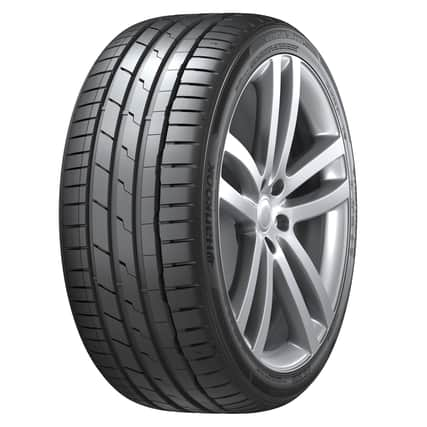Start your staycation with essential vehicle safety checks


Motorists are starting to take longer journeys as restrictions ease, and as many vehicles have not travelled long distances in a while, Hankook Tyre UK is urging motorists to carry out necessary safety checks before taking to the road.
Now that we can start to enjoy staycations, as the school holidays approach and plans are being made to visit family and friends, we should be preparing our vehicles in readiness for the longer journeys. It is vital that we carry out certain checks on our vehicle to ensure they are safe, and to minimise, where possible, the occurrence of a breakdown.
To help prepare for a longer journey, Hankook Tyre UK has released essential checks to undertake ahead of your trip.
1. CHECK THE TYRE TREAD DEPTH
The minimum legal tyre tread depth is 1.6mm, across the central three-quarter breadth of the tyre width and around the entire circumference of the tyre. To check your tread depth, simply place a 20 pence coin in the main tread channels at various points around the tyre. If any part of the outer band of the coin face is visible, it means the tyre tread is too shallow and needs to be replaced.
Driving on tyres that are reaching the minimum tyre tread depth are less effective in gripping the road, particularly in wet weather. This can lead to a lack of control and the risk of hydroplaning, as well as increasing the risk of tyre failure.
2. ENSURE TYRES ARE AT THE CORRECT PRESSURE
Underinflated tyres can lead to all sorts of problems, including poor vehicle handling from not being able to carry the vehicle’s weight. More of the tyre will also be in contact with the road than necessary, which leads to friction and more resistance, impacting the fuel efficiency and premature wear of the tyre, overheating and over flexing that can induce tyre failure.
Over inflated tyres reduce the tyre’s capabilities in traction, grip and braking performance. It can also lead to a less comfortable ride, and the tyres being more susceptible to damage.
Both over and under inflated tyres may lead to tyre failure, which can cause loss of control of the vehicle, and pose a potential danger to other road users.
You can usually find the correct air pressure level for your tyres on the inner side of the driver’s car door, inside of the petrol cap door, or in the car manual. There may be more than one pressure recommendation given for each tyre. This is because the pressure when your car is fully laden with suitcases and staycation supplies will be different from when you are alone in your car during your everyday commute.
Check the pressure of your tyre by using a certified pressure gauge to see if the reading matches the correct pressure level for the loading of your vehicle and adjust if necessary.
If any of your tyres are found to be illegal you can be fined and get points placed on your licence so it’s vital to check the pressure and tread regularly, and before any long journey. A professional tyre centre will be happy to help if you need extra reassurance.
3. EXAMINE THE CONDITION OF YOUR TYRE
Once you are confident all your tyres are correctly inflated, (including the spare if you have one) take a good look at each tyre to check the condition and legality. Any damage such as cracks, cuts, or bulges puts you at risk of a tyre failure, which can lead to a serious accident. Do not take the chance. Replace any tyre where the condition causes a concern.
Spare tyres: In the event of a tyre related breakdown, think about what is needed in order to deal with the situation. Apart from the spare wheel being correctly inflated and in a good condition, what about the other equipment like locking wheel nuts wheel brace and jack. Not all vehicles carry a spare, a tyre sealing gel and a tyre inflator may be part of the vehicle’s emergency kit, so it is important that you check what you have and be familiar with its operation.
4. CHECK YOUR BRAKES
If your car has been sitting on the driveway for most of lockdown, there is a chance that rust could develop on the brakes and cause binding. If something doesn’t feel right or you have any concerns, take your car to a garage, plenty of them offer a free brake checking service.
5. ASSESS YOUR FLUID LEVELS
Before starting the engine, check your fluid levels in the car. This includes engine oil, coolant, power steering fluid, brake fluid, transmission fluid and windshield washer fluid. Top up any that are low, and if you discover a fluid leak or other problem, have it checked by a professional before commencing your journey.
6. IS THE BATTERY FLAT?
During the winter months when headlights and windscreen wipers are often used, your battery is placed under tremendous load. If your car has only been used locally it’s possible that the battery could need charging. To get an accurate gauge of the health of your battery, test it after you have left it standing overnight and before starting the car up. It is advisable to have the battery checked by a professional who will be able to make sure the battery is functioning properly and advise if any intervention is required.
Zoe Baldwin, Marketing Manager at Hankook Tyre UK, says: “Many of us have missed driving and being able to explore the UK. Now that we can travel further, we need to make sure our cars are just as ready for the journey as we are.
“Most of the checks are very simple to make on our cars and if we ensure they are in a roadworthy condition, the journey will be safer and more enjoyable for all.”
For more information on tyre safety, please visit hankooktire.com/uk